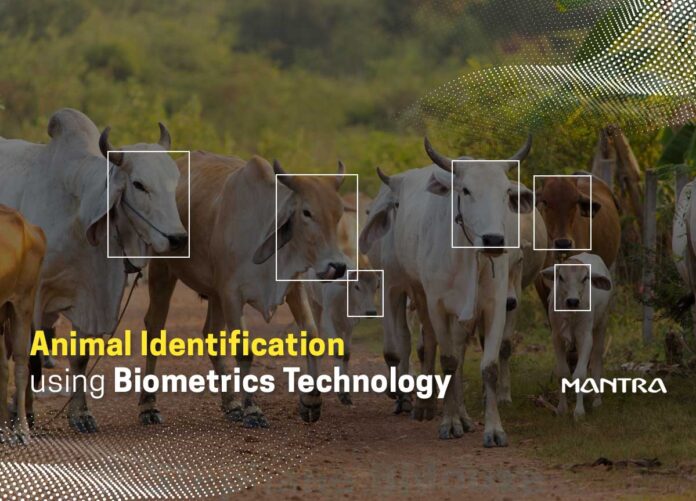Biometric Identification of Animals : A short communication
The word Biometrics is derived from the Greek bios (life) and metron (measure). Biometrics has long been used to describe the measurement and logging of biological data, such as animal and human populations (tracking of large numbers of similar life forms). Nowadays, particularly after the increase in human terrorism, biometrics is used to describe methods for non-invasive identification of individuals.
Animal biometrics is an identifying method that recognises animals through the use of pattern recognition software. It entails gathering biometric data from each animal, including voice and facial photos, and sifting out distinctive characteristics. Following a comparison of the extracted features to a database of features that have already been saved, a decision is made. Animal biometrics, which uses distinctive visual characteristics of each animal, such as the face or coat patterns of zebras and penguins or the muzzle point pattern of cattle, is utilised in a variety of domains, including the study of animal behaviour, ecology, population, and genetics. These distinctive characteristics, which resemble a person’s fingerprints, can be used to identify particular animals.
Advantages of biometric techniques
Traditional methods for marking animals can potentially affect their behaviour and cause harm, leading to erroneous research results and poor animal welfare (referanse om merking av pingviner). Any method used to apply a marker to an animal entails some degree of stress related to capture, handling and restraint. In addition, many common marking procedures also involve tissue damage and therefore cause pain, such as branding (heat, cold or chemicals), tattooing, toe clipping, ear notching and tagging. Furthermore, wearing a mark may alter the animal’s appearance, social interaction, other behaviours and ultimately its survival. An ideal method should identify individuals reliably and permanently with no adverse effects on the animals. Biometric methods have therefore been developed to recognize animals based on physical characteristics or behavioural signs. Some of these methods have been used for some time for reliable identification of humans. An animal biometric identifier is any measurable, robust and distinctive physical, anatomical or molecular trait that can be used to uniquely identify or verify the claimed identity of an animal (Barron et al., 2009). Therefore a good biometric trait should be easily presented to a sensor and converted into a quantifiable format, should not subjected to changes over time and should differ in the patterns among the general population, the higher the degree of distinctiveness, the more unique is an identifier. Biometric methods are non-invasive, do not cause pain and do not alter the appearance of the animal. These methods will therefore have no effect on the behaviour and survivability of the animals, except in cases where repeated capture and/or handling is necessary.
Types of Biometrics based identification approaches
Behavioural biometrics: These biometrics are based on information obtained from a physical action, such as the way a person speaks, signs their name, or types on a keyboard. Physiological biometrics: These biometrics are based on measurements taken directly from a portion of the body, such as fingerprints, iris, retina, or face patterns, as well as patterns on the body coats of some animals, such zebras or cows.
Enrollment: A photograph of the animal’s face is taken, and it is saved in a database as a guide for upcoming identification. Key face traits including the distance between the eyes, the nose’s shape, and the jawline’s contour are extracted by the algorithm from the facial image. The extracted features are used to generate a special template, which is then saved in the database. When an animal’s face is provided to the system for identification, its features are retrieved and put in comparison with the template(s) that have been saved in thedatabase.
Decision: The system then decides whether to approve or reject the identification attempt depending on how similar the supplied face is to the templates that are alreadystored. These are the main stages involved in facial recognition for animal biometrics. The image capture stage involves capturing an animal’s face image using a sensor like a camera, followed by image processing techniques like resizing, augmentation, and enhancement. Feature extraction involves selecting facial features based on pixel intensity values, and using techniques like Principal Component Analysis and Local Discriminant Analysis to extract unique data from the sample and create a template. The comparison stage involves comparing the template with a new test sample, and the match/non-match stage involves the system deciding whether the features extracted from the new sample are a match or nonmatch, and whether two faces belong to the same animal or not. The recognition rates of animal faces for biometric identification still depend on a number of variables, including lighting, position, and image quality, despite the fact that animal facial expressions are typically more stable than human ones. Additionally, the accuracy of facial recognition may vary depending on the species of animal, and recognition rates may also be influenced by the technology and biometric identification algorithms utilised. Therefore, despite the potential benefits of animal facial recognition, it is still a work in progress, and the effectiveness will rely on the application and environment.
Challenges of Face Recognition in Animals 

In summary, although there are challenges in recognizing animal faces due to variations in pose, illumination, and image quality, several techniques such as 3D modeling, multiple views, image enhancement, and deep learningbased methods can be used to overcome these challenges and improve the recognition performance. 
Compiled & Shared by- Team, LITD (Livestock Institute of Training & Development)
Image-Courtesy-Google
Reference-On Request.
Biometric Identification of Animals




